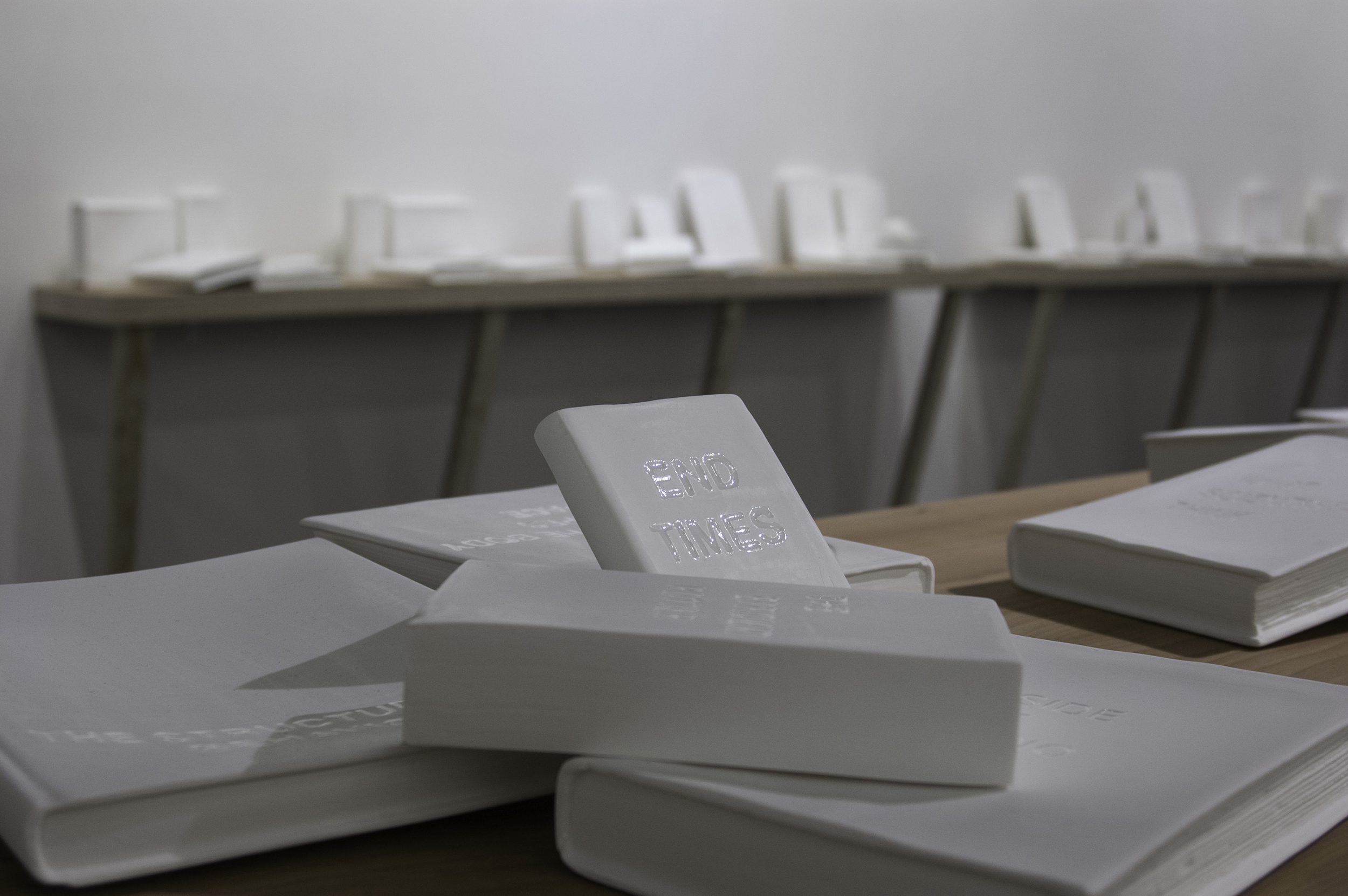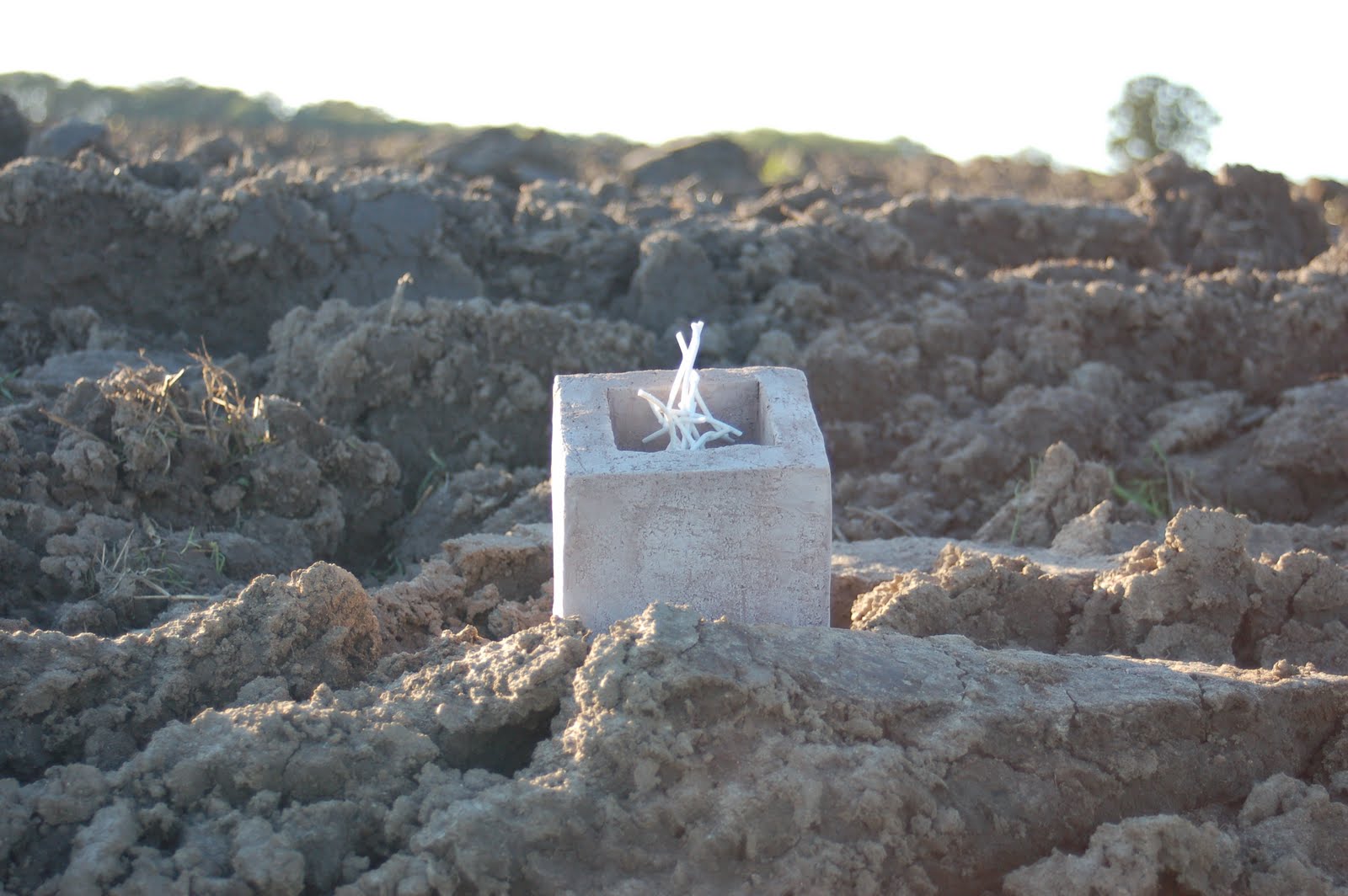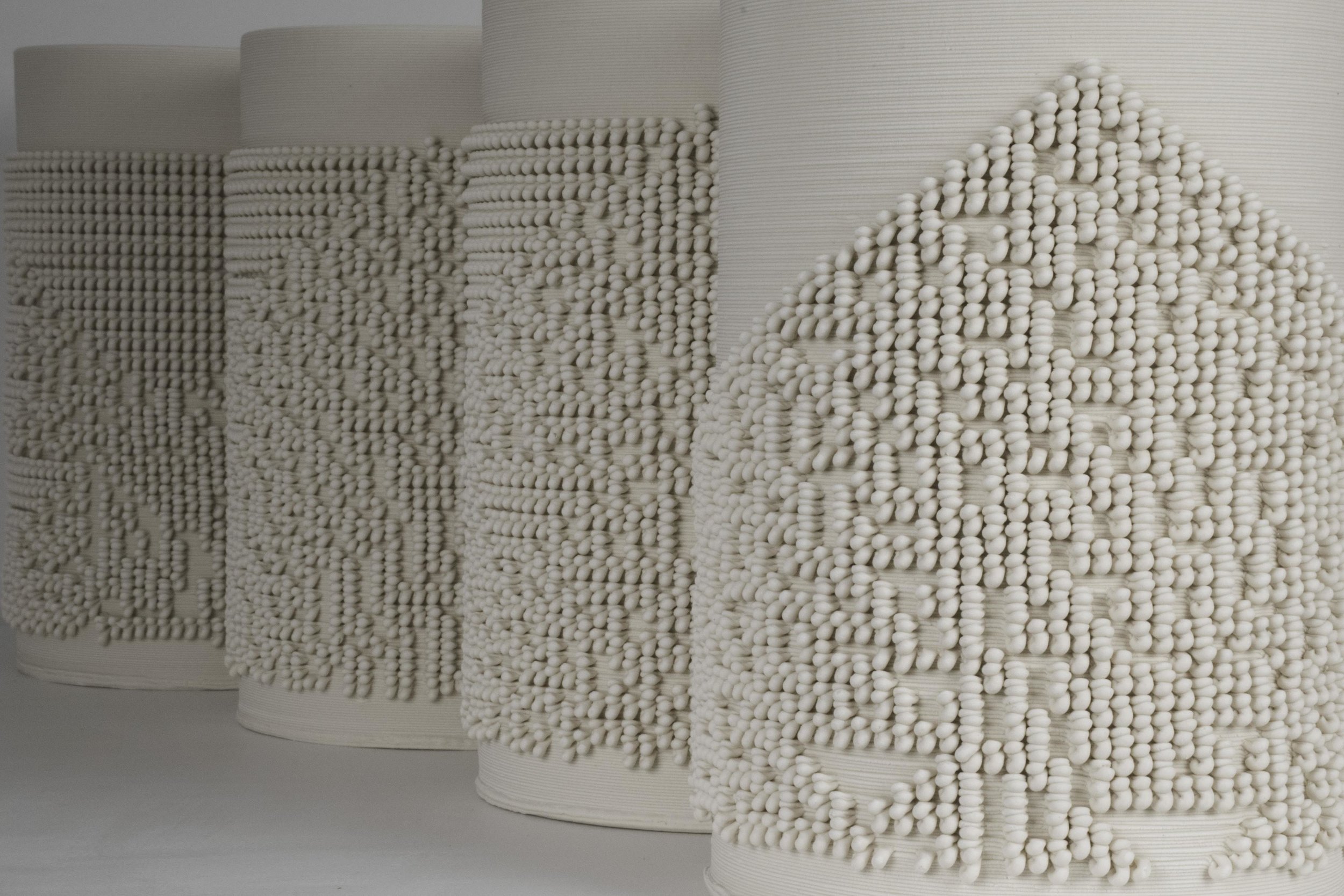LABOR
Autobiographical aspects—growing up in a blue-collar family in communist Hungary; being the first in my family to go to college; studying medicine, neuroscience, art and philosophy—contextualize my work in the practices of both labor and knowledge economies. These, in turn, are often directly revealed and reenacted in my work. I often wonder about what kind of knowledge is attainable through the actions of the body and what is through rational thinking and theory? Where does tacit learning reside and which kinds of truths are more apparent, authentic, shareable and useful?
The process of making sculpture is accumulative and time-consuming, the repetitiveness of casting, carving, sanding, cutting, stitching becomes a badge that represents the physical labor invested.
Lovelabor, created during Arts/Industry, an artist residency program at the Kohler Co., directly addresses this connection between physicality and labor, between work and the laborer’s body. For this project, I collected broken fragments of the factory’s discarded plaster production molds and made new molds off of these shards. Each industrial plaster mold is a highly designed, complex form, but it is also disposable as a tool, replaced frequently in the factory production process. Molds, to this day, are handled by human hands. The dignity of strenuous labor is celebrated and honoured in We Are Working All the Time, a photography series created in collaboration with Kohler associates.
Artistic production has been likened to the cultural circulation of a gift (Lewis Hyde) and many of my projects have exchange and interaction at their core. Words are being passed from participant to participant in Palavras, invented book titles receive various narratives from a multitude of writer participants to form a library of collective knowledge in Scientia Library. The Bornholm Project was designed for and took place in the public space so that the island’s residents may directly interact with the artworks by moving them from site to site. Textured to resemble dry earth, the clay block place markers were left unfired to allow them to eventually erode and weather; rain and wind slowly but inevitably returning both native and foreign clays back into the soil.
Although most recently I've been devoting my artistic process to research in ceramic 3D printing technology, I don't consider the digital work to be in opposition to physical labor or to the notion of craft. The ceramic 3D printer is no more intelligent or autonomous than the potter's wheel, requiring specific gestures by a practiced hand both in the design process and during the course of printing. This dance with the machine, a direct engagement with every small bit of the process from the mathematics to coding, CAD and a direct manipulation of the machine is key in my practice and a source of inspiration for the next idea.



